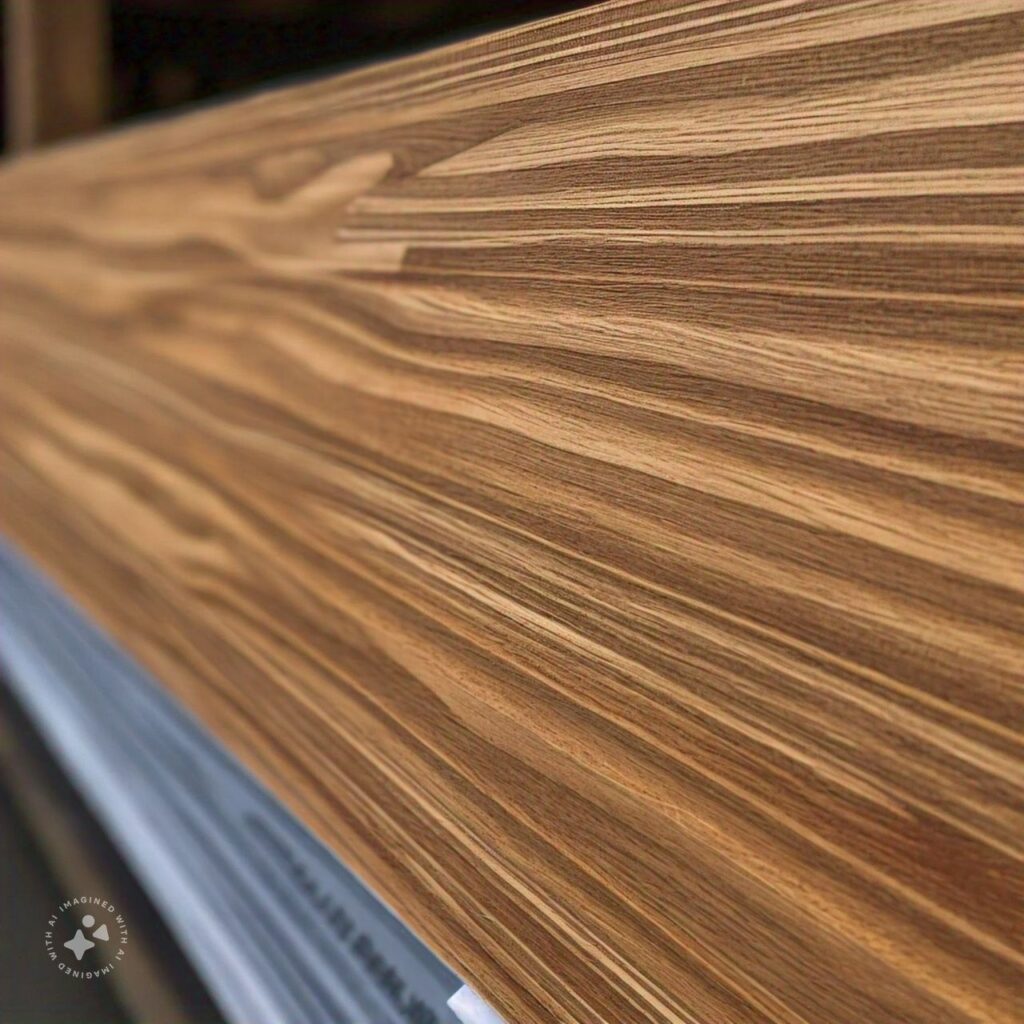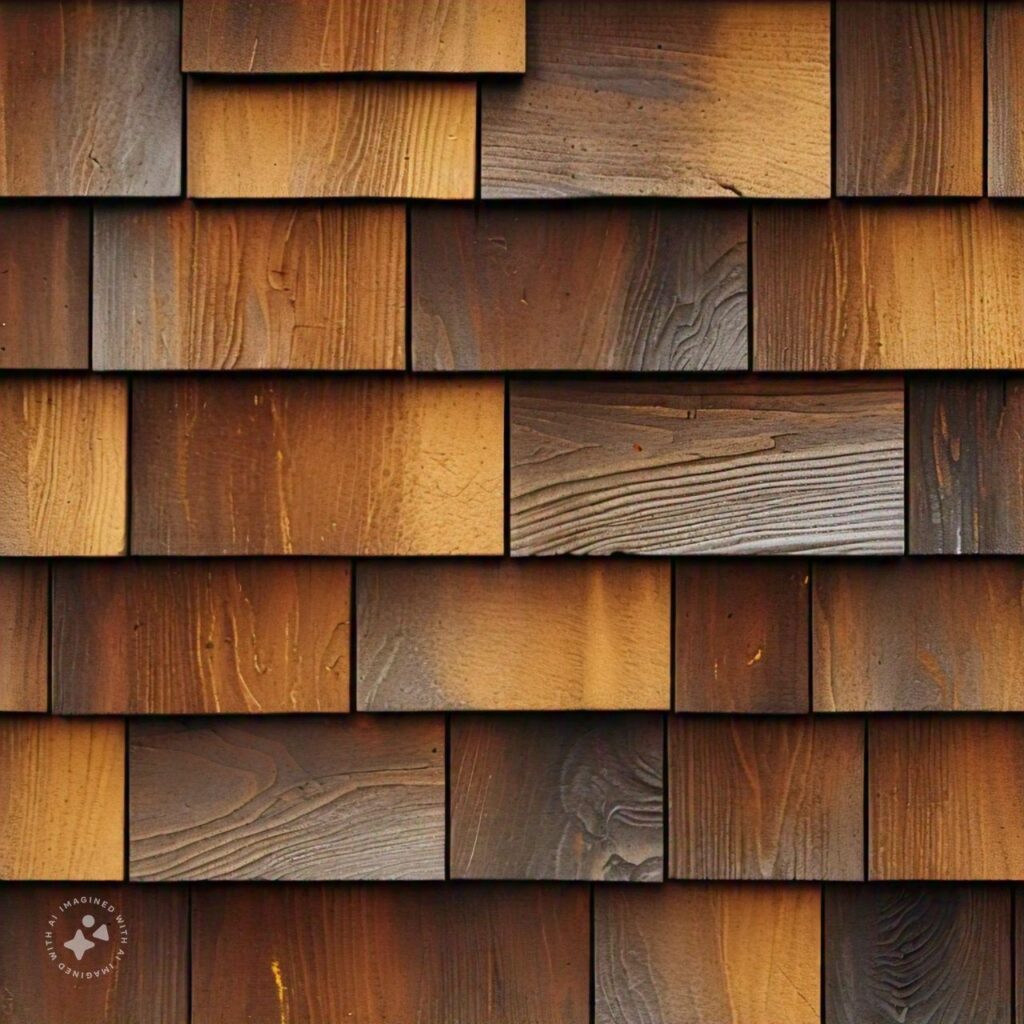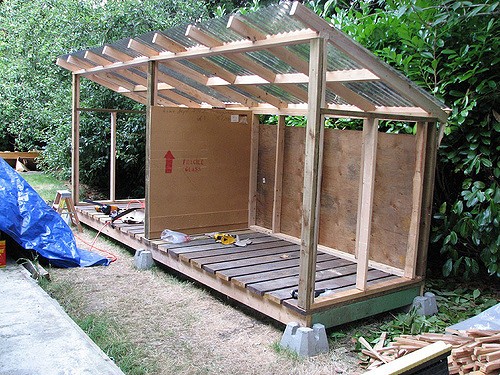All homes have siding of some sort or another. That siding might be brick, stone, or adobe, even though we don’t think of those materials as siding. But most of the time, when we talk about siding, we’re talking about a wood product, aluminum, or vinyl. In those last two cases, aluminum and vinyl are often installed over the original siding when a home needs a facelift.

Wood siding in the USA goes back to the earliest sawmills. Clapboards, slabs of wood cut from a tree, were used in place of logs as early as the 1700s. But the clapboard was reinvented in the early 1800s, giving us the clapboard we know today.
Aluminum and vinyl siding were invented as a lower-cost alternative to clapboard siding, but clapboard wasn’t the lowest-cost building material to use as covering for a home. That designation belonged to T1-11 (sometimes written as T-111) siding, a plywood product commonly used in the 1960s through 1980s.
What is T1-11 plywood siding? Is it worth using for a home or outbuilding? This wood-based siding product isn’t as popular as it used to be, but it still has several good uses. If you want to build an outbuilding for your home and don’t want to spend a lot of money, you need to look at T1-11 siding as a possible option.
T1-11 Siding: Affordable and Practical
You’ve probably seen T1-11 siding at least a few times, perhaps without even looking at it. This handy engineered wood product was very popular throughout the 1960s, ’70s, and ’80s but fell out of favor as aluminum, vinyl, and composite siding gained popularity. Luckily, manufacturers still make good quality T1-11 siding. It might not be your first choice for building a home, but it could be ideal for finishing up a shed, chicken coop, or other outbuilding in an inexpensive yet attractive way.
There are two T1-11 plywood siding panel grades: OSB and softwood plywood. The OSB version is usually cheaper than the plywood but has an inherent downside: OSB doesn’t typically last as long, is easier to damage, and can’t be finished in as many ways as plywood T1-11 siding.
As initially designed, T1-11 siding was made from Softwood plywood. The addition of OSB was made as a cost-cutting measure. However, the best T1-11 siding is still made of softwood plywood. OSB is much more susceptible to water-soaking and swelling of the sheet, especially at the edges. This is because of the large number of layers in the average panel.
The best T1-11 is pressure-treated T-1-11 plywood siding. The pressure treatment process injects rosin and other chemicals into the wood fibers under pressure, making it virtually waterproof. It’s more expensive than other versions of the siding, but it will last considerably longer, even without painting or staining it.
Other Plywood Siding Projects
While T1-11 siding is the most common plywood siding, it is not the only style. You can also find V-groove and beaded panels. While these are more likely to be used indoors, especially the beaded panels, they can be used just like T1-11 panels.
One of the configurations Hardi board in is visually almost identical to T1-11 siding. Although wood fibers are used in the construction of Hardi board, it is not generally considered a wood product. Combining cement fibers with sand water and cellulose from wood makes a very dense, durable product. It comes pre-primed, with instructions that it must be painted within 180 days. However, it cannot be stained.
Types of T1-11 Siding

Most T1-11 siding products come in sheets measuring 48×96 inches, although it is possible to find them in sheets that measure 48×120 inches. Just like plywood, T1-11 siding comes in a variety of thicknesses. The most common T1-11 siding sheet thicknesses are 11/32” and 19/32”. For most applications, you only need the thinner versions, as you won’t need the structural strength that ¾” siding imparts.
The grooves in T1-11 siding may be four or eight inches apart, depending on the mill that made it. Some companies also offer a pleasing reverse board and batten design. There’s no structural difference here; the main factor is aesthetics, and this decision is a mere matter of personal preference.
Depending on the manufacturer and supplier, you may find T1-11 siding in a smooth finish or a rough, more rustic finish. Both types are acceptable, with the rough, rugged surface providing a more rustic, natural appearance.
Plywood T1-11 siding can be stained with oil-based exterior stains, or it can be primed and painted. The choice is yours. However, if you opt for OSB T1-11 siding, you must prime and paint it with an opaque finish, such as exterior grade paint. Staining is not an option because the OSB strands show through the surface.
Installation Tips for T1-11 Siding
Before you get started with T1-11 siding installation, note that this type of siding should never be installed in contact with the ground. Always be sure to install it high enough above the ground, that standing water will not be able to reach the edge. The edges of the panels are highly absorbent, and contact with moisture will lead to swelling and/or separation of the sheets. When this happens, T1-11 siding becomes susceptible to mold, meaning it will need to be replaced long before its expected lifespan ends.
One truck you can use if you plan to paint your T1-11 siding is to seal the edge with caulking before installing. Standard painter’s caulking, rubbed into the edge with your finger, will seal the end grain much better than the paint can, helping to prevent water from soaking in. Do this before installing the siding, allowing the caulking time to dry before installation so you can reapply if the edges are not fully sealed.
All types of T1-11 siding have outer edges with 3/8-inch wide lips on the long sides, designed to overlap the previously installed piece. This is not a tongue-in-groove joint but rather a lap joint. Panels are permanently installed with the grooves running vertically.
When installing, the edges should be positioned over a stud and nailed into place together, with one overlapping the next, rather than being nailed separately. The secret to this is nailing in this order:
- Cut your first piece, which should be mounted to one end of the wall. If you need to cut it to width so that the edge falls in the center of a stud, cut the excess material from the corner side of the sheet, not the side that will join up with the next sheet. Note that this sheet should be mounted so that the lower side of the lap is the joining side.
- Mount the first piece, nailing it first to the corner of the building, then across the top, to the center studs, and finally to the bottom, leaving the joining side free. Double-check as you work to ensure the sheet is plumb and aligned correctly with the adjoining stud.
- Cut the next piece (if needed) and align it with the first, overlapping the joint and nailing that side of the sheet first to keep it from sliding. Then, follow the same nailing pattern as the first sheet, leaving the lap joint free to mount the next sheet.
- Continue in this manner, always leaving the lap joint to be nailed when the adjoining sheet is attached.
- Add corner and any other trim. It is common to add a 1”x 2” trim board at the top, where the sheet butts into the soffit or gable end.
As always, the rule is to measure twice and cut once. If you make a mistake and have to remove a nail or two, you will likely damage the siding. Use a circular saw to cut the siding to fit around windows and doors. Allow a ½-inch expansion gap in these places. Don’t worry, though; the trim will hide it.
Depending on building codes in your location and the type of project you’re working on, you may be able to use T1-11 siding alone, without any other sheathing beneath it. This is a very economical way to go for sheds and other outbuildings, but keep in mind that your building will be more substantial if you use plywood sheathing in the corners. Typically, this is 1/2” sheathing, with Styrofoam sheathing used throughout the rest of the structure.
Adding sheathing underneath your T1-11 siding also allows you to cover the structure with Tyvek house wrap or tar paper (roofing paper). This gives a moisture barrier underneath the siding so that the structure is protected from the rain, even if the siding becomes damaged. It is possible to do this without sheathing or attaching the moisture barrier directly to the studs, but there’s a good chance of it becoming damaged over time.

As with any project, you will want to apply 1”x 4” lumber trim pieces to the corners, at the joint between the siding and the soffits, and around any windows. You’ll also want to apply Z-flashing to any upper joints to prevent water from leaking under the top edges of your sheets.
After installation, finish T1-11 siding with your choice of exterior stain, or go with a primer and paint combination that suits your budget and your taste. Be sure to paint or stain well in the grooves, as it is easy to miss spots there, leaving a place for moisture to seep into the wood. Please note that it is essential to repaint or restain occasionally to protect the wood from moisture.
If you are using pressure-treated T1-11 siding, you must wait before painting or staining it. Staining is not generally recommended for pressure-treated wood products, as the finish tends to become sloppy. For painting, you should wait for six months, allowing the chemicals in the wood time to dry thoroughly. Failure to wait for this time will cause the paint to flake off.
It’s worth noting that T1-11 siding is relatively easy to install. Many guides recommend hiring a professional to do it for you, but considering that part of this product’s appeal is its inexpensive price tag, you may want to spend time planning your project carefully and then hang the siding yourself. It’s a reasonably forgiving product – you must follow guidelines for overlapping edges, measure carefully, and ensure that all your lines are straight.
How to Maintain T1-11 Siding
T1-11 siding requires regular maintenance. Repainting or restaining every few years helps protect the wood. If you use pressure-treated T1-11, wait six months before applying paint to allow the chemicals in the wood to dry.
Conclusion: Is T1-11 Worth It?
T1-11 siding offers a cost-effective, durable solution for sheds and outbuildings. Proper installation and maintenance can provide long-lasting protection for your structure.




